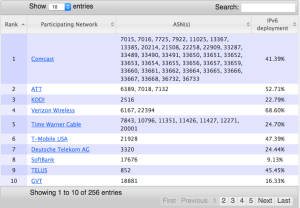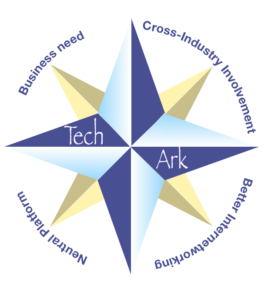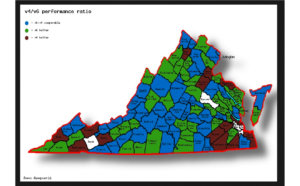Would you believe me if I told you that the most important IPv6 measurements showcase right now is one built without owning any network, deployed probes, and no ad-based statistical sampling?
Whether or not you believe me, you should check out http://www.worldipv6launch.org/measurements . It refers to a number of important IPv6-related measurements activities, but the main highlight is the list of networks — ranked by overall IPv6 traffic volume.

Snapshot of WIPv6L data from January 2016
This is a snapshot of a snapshot of data. The site also tracks the history of each participating network’s participation since the site was started, shortly before the World IPv6 Launch in 2012.
The World IPv6 Launch site was created and is maintained by the Internet Society. The Launch event itself (on June 6, 2012) took the form of access network operators (ISPs) and content providers (e.g., Google, Facebook, Yahoo!) who enabled IPv6 in their networks or on their main service pages, as appropriate to their function. As part of measuring the success of meeting the targets of the Launch, a handful of content providers agreed to share, with the Internet Society, their data measuring how much of each participating network’s traffic was coming to their content sites over IPv6.
That provides an example of the kind of measurements that can be carried out within an organization’s own network (in this case, the networks of the content providers). This is one form of reliable measurement insofar as it is tightly coupled to the organization that has the best insight into how that network is set up. It is also, often, data that doesn’t get seen outside the corporate boundaries because it can be perceived as sensitive. In order to address that, the Internet Society works to combine the data from multiple sources, thereby providing a balanced perspective that doesn’t unduly expose participating measurers.
Does it displace other measurements activities? No — these are different and important perspectives to share. There were IPv6 measurements activities before the World IPv6 Launch, and they continue to inform the global dialog on IPv6.
Let’s revisit the basic foundation of the World IPv6 Launch measurements: powerful IPv6 measurements are provided to the world at large because private corporations are willing to collaborate to do what they can’t do individually: share their unique perspective on the Internet.
That’s the sort of power that NOMA is aiming to leverage.
What are some other measurements that networks are tracking within their own corporate boundaries that could be brought together to paint a broader perspective?



